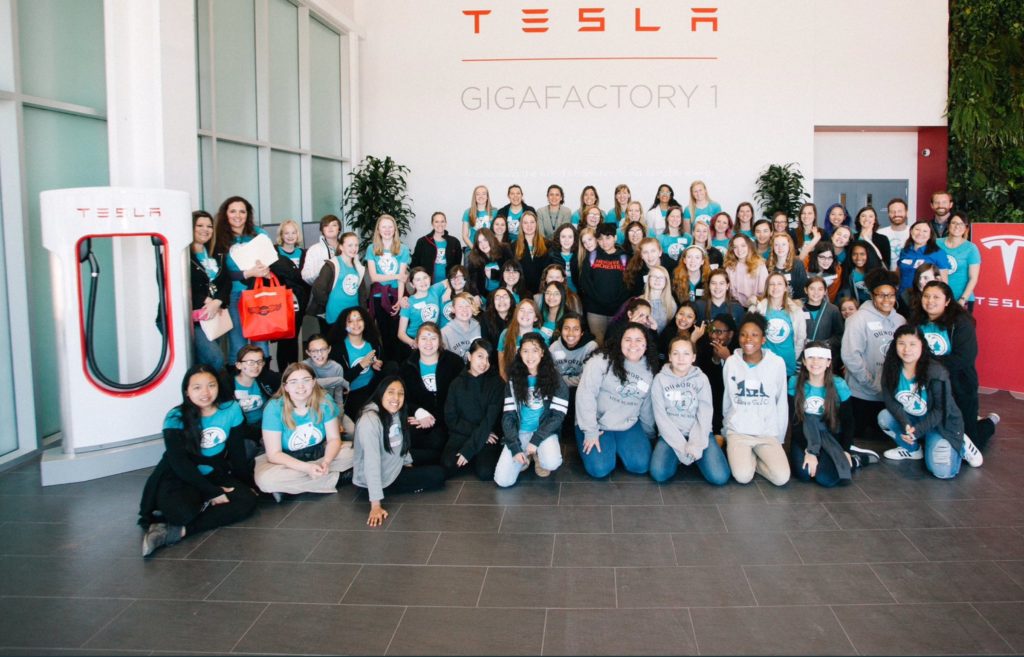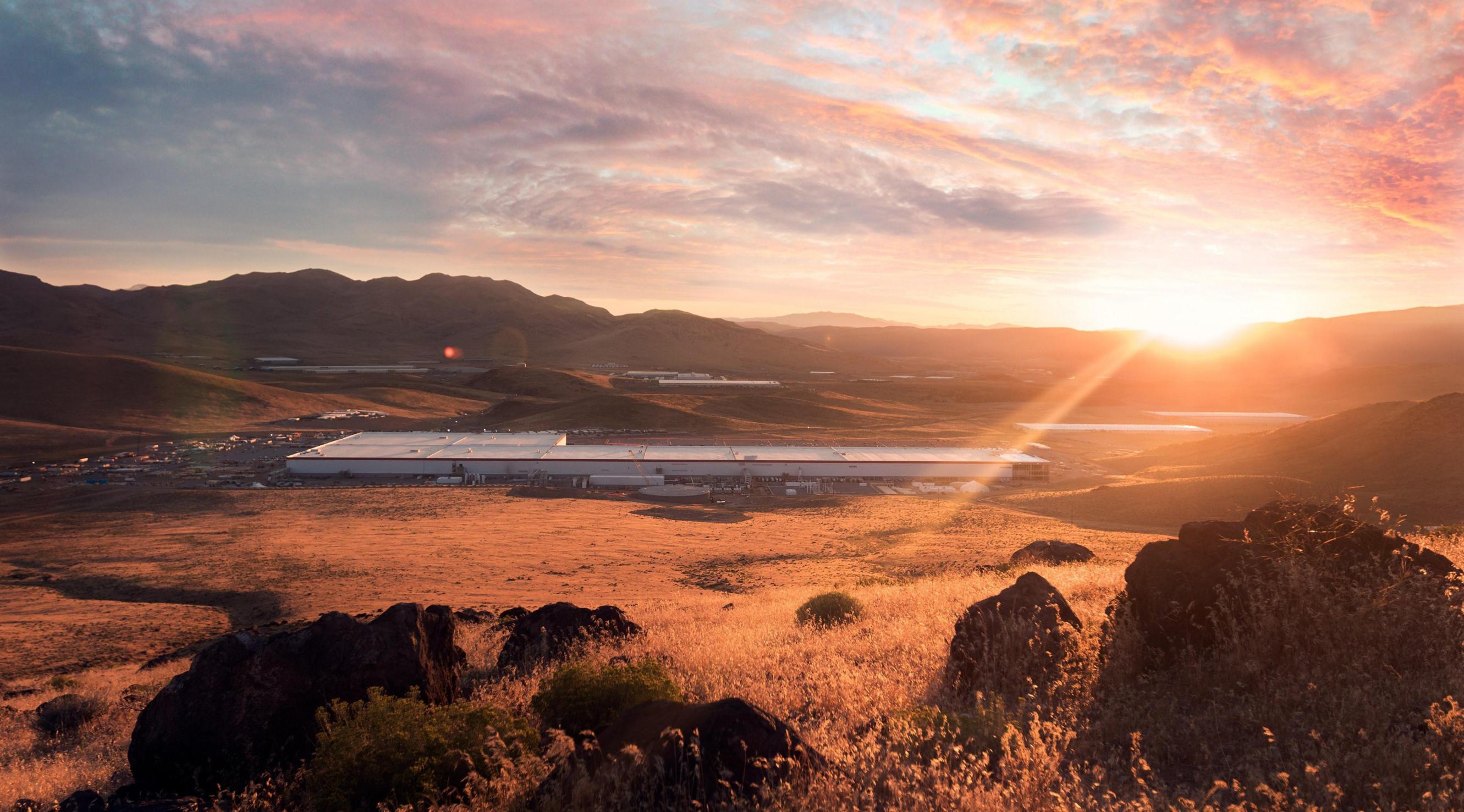In an announcement at a meeting with the Nevada Board of Education last Thursday, Tesla officials stated that it would be issuing an initial grant of $1.5 million to the state’s K-12 education system. The donation is the first part of a $37.5 million grant that Tesla is set to roll out for the next few years, as a means for the company to help develop STEM talent within the state.
According to Nevada Gov. Brian Sandoval, Tesla’s grant, which would be released on a quarterly basis, will give students more access to specialized fields of study such as Science, Technology, Engineering, and Math (STEM). In a statement to the Nevada Appeal, Tesla CTO JB Straubel stated that the electric car maker and energy company expects STEM jobs in the state to increase over the coming years.
“The demand for STEM jobs in Nevada will continue to grow dramatically over the next few years,” Straubel said.
Tesla selected the recipients of the initial $1.5 million grant together with teachers, business leaders, and Nevada government officials. The first round of recipients includes $315,550 to FIRST Nevada and $127,100 to Robotics Education and Competition Foundation, which would allow schools to establish premier robotics programs. $263,924 will also be given to the DRI at UNR as well, to develop teacher training programs on robotics and STEM.
The Envirolution, Inc. is set to receive $262,700, which would enable the institution to develop a STEM program that focuses on energy sustainability, as well as projects that push energy efficiency to local Nevada schools and businesses. $200,000 will also be granted to Jobs for Nevada Graduates for the development of mentoring and employability skills. Sierra Nevada Journeys is set to receive $154,083 to implement programs that would foster interest in STEM fields at an early age. The grant will also be used to provide 250 scholarships for students in underserved communities, where qualifying individuals could attend overnight learning programs.
Lastly, $76,643 will be granted to Energetics Education for a pilot Solar Rollers program in Washoe County, which would challenge high school students to design, build, and race solar-powered radio-controlled vehicles. An additional $50,000 each at Washoe and Clark school districts will further be distributed to expand special assignment roles in Career and Technical Education offices.
Tesla’s grant to Nevada’s education system was outlined in the company’s documents from October 2014. As noted by auto journalist Bozi Tatarevic on Twitter, Tesla’s donations for the state’s education system is part of Gigafactory 1’s incentive package. In the filings submitted by Tesla then, the electric car and energy company pledged to make direct contributions to the state’s K-12 programs, together with a $1 million grant to fund advanced battery research at the UNL, as well as a pledge to support the state’s the veterans.
“Tesla will make direct contributions to K-12 education of $37.5 million beginning August 2018; grant $1 million to fund advanced battery research at UNLV; prioritize the employment of Nevadans and Veterans.”

Tesla takes part in this year’s Introduce a Girl to Engineering Day. [Credit: Tesla]
As noted in Tesla’s Gigafactory incentive deal, the battery facility is expected to increase regional employment by 10%, with a total economic impact of around $100 billion. This economic impact is expected to increase Nevada’s regional GDP by 20%. The Gigafactory is also estimated to generate around $1.9 billion in total financial impacts.
Tesla’s Gigafactory in Nevada is tasked with the production of the battery packs and drivetrains for the Model 3, the company’s first attempt at a mass-market electric car. Over the past year, Gigafactory 1 has largely grown from within as Tesla continued the production ramp of the electric sedan. This past Q2 2018, reports emerged that robots and additional machinery from Tesla Grohmann Automation in Germany were transported by air from Europe. The robots were reportedly installed at the Gigafactory to enable Tesla to address production bottlenecks in the Model 3’s battery module line.
Despite its already massive size, Gigafactory 1 is less than 30% complete. Fully built, Gigafactory 1 will be the world’s largest building by physical footprint, covering 13 million square feet.
News
Tesla begins Robotaxi certification push in Arizona: report
Tesla seems serious about expanding its Robotaxi service to several states in the coming months.

Tesla has initiated discussions with Arizona transportation regulators to certify its driverless Robotaxi service in the state, as per a recent report from Bloomberg News. The move follows Tesla’s launch of its Robotaxi pilot program in Austin, Texas, as well as CEO Elon Musk’s recent comments about the service’s expansion in the Bay Area.
The Arizona Department of Transportation confirmed to Bloomberg that Tesla has reached out to begin the certification process for autonomous ride-sharing operations in the state. While details remain limited, the outreach suggests that Tesla is serious about expanding its driverless Robotaxi service to several territories in the coming months.
The Arizona development comes as Tesla prepares to expand its service area in Austin this weekend, as per CEO Elon Musk in a post on X. Musk also stated that Tesla is targeting the San Francisco Bay Area as its next major market, with a potential launch “in a month or two,” pending regulatory approvals.
Tesla first launched its autonomous ride-hailing program on June 22 in Austin with a small fleet of Model Y vehicles, accompanied by a Tesla employee in the passenger seat to monitor safety. While still classified as a test, Musk has said the program will expand to about 1,000 vehicles in the coming months. Tesla will later upgrade its Robotaxi fleet with the Cyercab, a two-seater that is designed without a steering wheel.
Sightings of Cybercab castings around the Giga Texas complex suggests that Tesla may be ramping the initial trial production of the self-driving two-seater. Tesla, for its part, has noted in the past that volume production of the Cybercab is expected to start sometime next year.
In California, Tesla has already applied for a transportation charter-party carrier permit from the state’s Public Utilities Commission. The company is reportedly taking a phased approach to operating in California, with the Robotaxi service starting with pre-arranged rides for employees in vehicles with safety drivers.
News
Tesla sets November 6 date for 2025 Annual Shareholder Meeting
The automaker announced the date on Thursday in a Form 8-K.

Tesla has scheduled its 2025 annual shareholder meeting for November 6, addressing investor concerns that the company was nearing a legal deadline to hold the event.
The automaker announced the date on Thursday in a Form 8-K submitted to the United States Securities and Exchange Commission (SEC). The company also listed a new proposal submission deadline of July 31 for items to be included in the proxy statement.
Tesla’s announcement followed calls from a group of 27 shareholders, including the leaders of large public pension funds, which urged Tesla’s board to formally set the meeting date, as noted in a report from The Wall Street Journal.
The group noted that under Texas law, where Tesla is now incorporated, companies must hold annual meetings within 13 months of the last one if requested by shareholders. Tesla’s previous annual shareholder meeting was held on June 13, 2024, which placed the July 13 deadline in focus.
Tesla originally stated in its 2024 annual report that it would file its proxy statement by the end of April. However, an amended filing on April 30 indicated that the Board of Directors had not yet finalized a meeting date, at least at the time.
The April filing also confirmed that Tesla’s board had formed a special committee to evaluate certain matters related to CEO Elon Musk’s compensation plan. Musk’s CEO performance award remains at the center of a lengthy legal dispute in Delaware, Tesla’s former state of incorporation.
Due to the aftermath of Musk’s legal dispute about his compensation plan in Delaware, he has not been paid for his work at Tesla for several years. Musk, for his part, has noted that he is more concerned about his voting stake in Tesla than his actual salary.
At last year’s annual meeting, TSLA shareholders voted to reapprove Elon Musk’s compensation plan and ratified Tesla’s decision to relocate its legal domicile from Delaware to Texas.
Elon Musk
Grok coming to Tesla vehicles next week “at the latest:” Elon Musk
Grok’s rollout to Tesla vehicles is expected to begin next week at the latest.

Elon Musk announced on Thursday that Grok, the large language model developed by his startup xAI, will soon be available in Tesla vehicles. Grok’s rollout to Tesla vehicles is expected to begin next week at the latest, further deepening the ties between the two Elon Musk-led companies.
Tesla–xAI synergy
Musk confirmed the news on X shortly after livestreaming the release of Grok 4, xAI’s latest large language model. “Grok is coming to Tesla vehicles very soon. Next week at the latest,” Musk wrote in a post on social media platform X.
During the livestream, Musk and several members of the xAI team highlighted several upgrades to Grok 4’s voice capabilities and performance metrics, positioning the LLM as competitive with top-tier models from OpenAI and Google.
The in-vehicle integration of Grok marks a new chapter in Tesla’s AI development. While Tesla has long relied on in-house systems for autonomous driving and energy optimization, Grok’s integration would introduce conversational AI directly into its vehicles’ user experience. This integration could potentially improve customer interaction inside Tesla vehicles.
xAI and Tesla’s collaborative footprint
Grok’s upcoming rollout to Tesla vehicles adds to a growing business relationship between Tesla and xAI. Earlier this year, Tesla disclosed that it generated $198.3 million in revenue from commercial, consulting, and support agreements with xAI, as noted in a report from Bloomberg News. A large portion of that amount, however, came from the sale of Megapack energy storage systems to the artificial intelligence startup.
In July 2023, Musk polled X users about whether Tesla should invest $5 billion in xAI. While no formal investment has been made so far, 68% of poll participants voted yes, and Musk has since stated that the idea would be discussed with Tesla’s board.
-

 Elon Musk1 week ago
Elon Musk1 week agoTesla investors will be shocked by Jim Cramer’s latest assessment
-

 Elon Musk3 days ago
Elon Musk3 days agoElon Musk confirms Grok 4 launch on July 9 with livestream event
-

 Elon Musk15 hours ago
Elon Musk15 hours agoxAI launches Grok 4 with new $300/month SuperGrok Heavy subscription
-

 News7 days ago
News7 days agoTesla Model 3 ranks as the safest new car in Europe for 2025, per Euro NCAP tests
-

 Elon Musk2 weeks ago
Elon Musk2 weeks agoA Tesla just delivered itself to a customer autonomously, Elon Musk confirms
-

 Elon Musk1 week ago
Elon Musk1 week agoxAI’s Memphis data center receives air permit despite community criticism
-

 Elon Musk2 weeks ago
Elon Musk2 weeks agoTesla’s Omead Afshar, known as Elon Musk’s right-hand man, leaves company: reports
-

 News2 weeks ago
News2 weeks agoXiaomi CEO congratulates Tesla on first FSD delivery: “We have to continue learning!”















